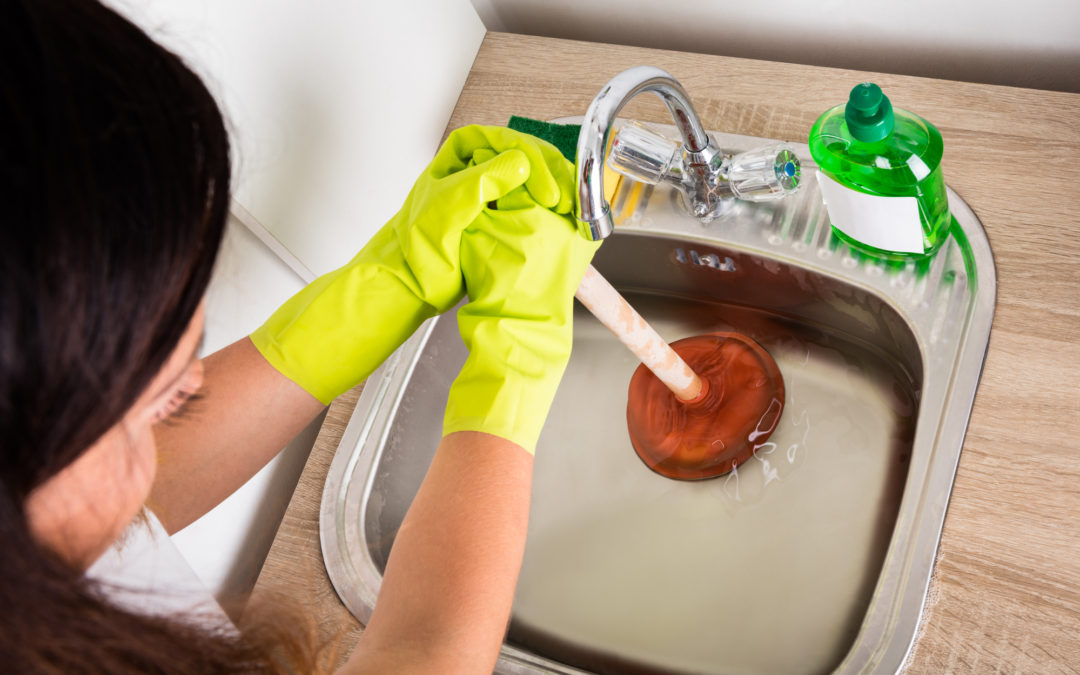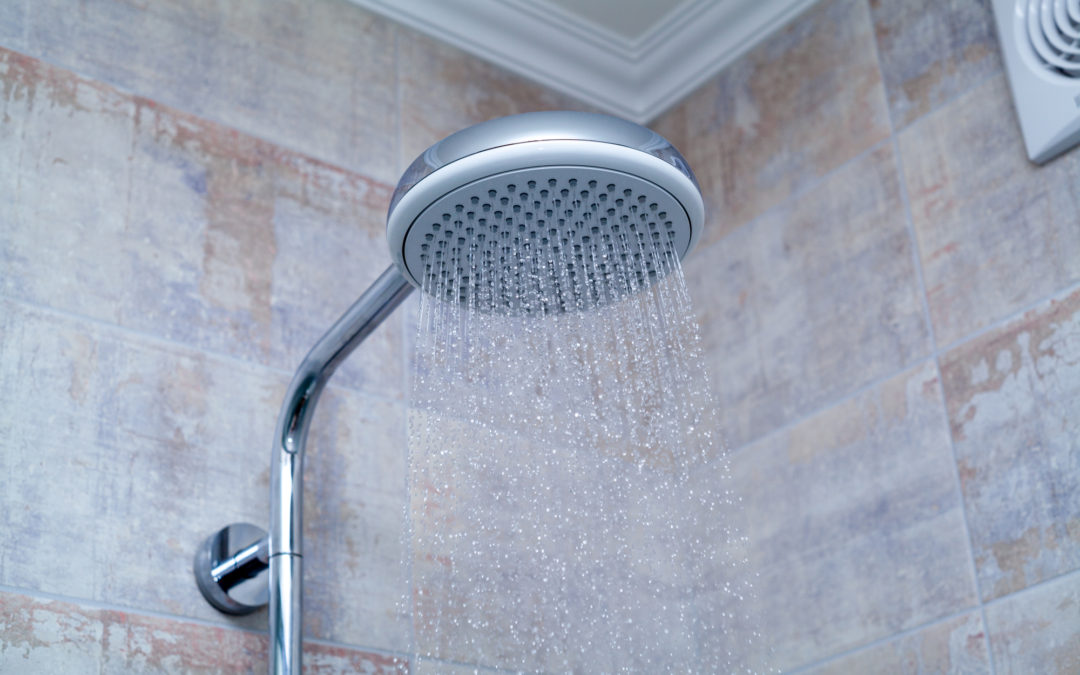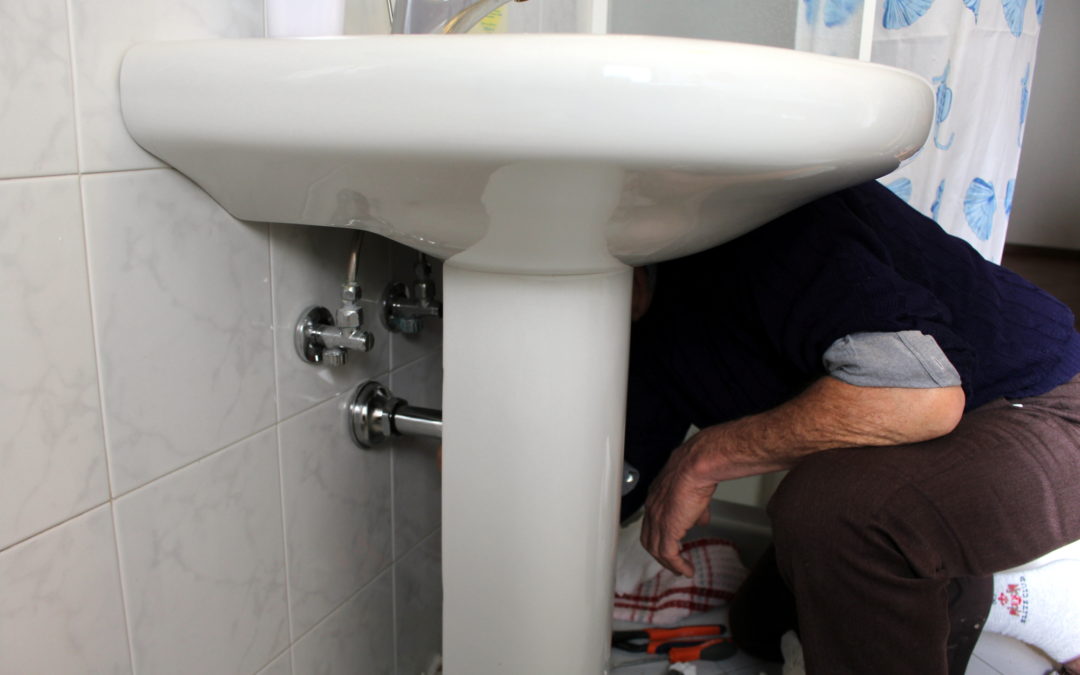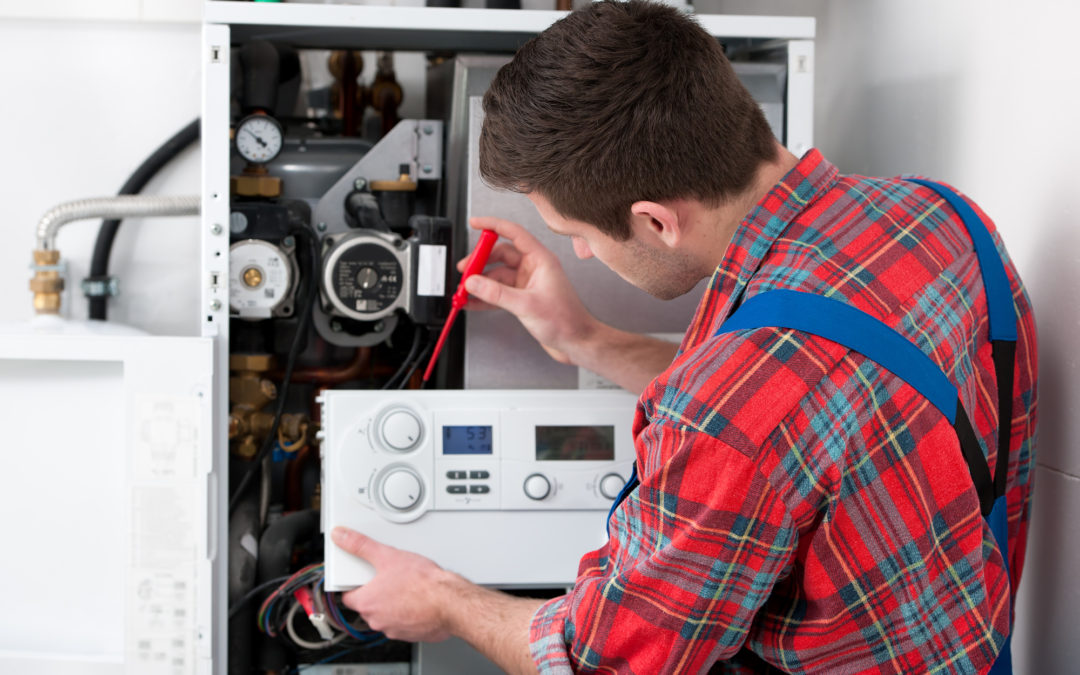
by avi | Sep 12, 2023 | Maintenance
When it comes to maintaining your home, it’s crucial to pay attention to your plumbing system. From keeping your faucets flowing smoothly to ensuring your drains are clear, a well-maintained plumbing system enhances comfort, safety, and the value of your home. However, do you know which plumbing services are essential for optimal functionality? In this article, we delve into five critical plumbing services that every homeowner should know about.
Understanding the Key Plumbing Services
1. Drain Cleaning
While clogs may seem minor issues, they can build up over time, hindering the smooth functionality of your drain. Buildup of solids such as grease, soap, hair, or food scraps can lead to blockages, creating nasty odors and possibly causing structural damage to your drains over time. Regular professional drain cleaning should be a top priority as it not only helps eliminate current clogs but also identifies and rectifies potential plumbing threats.
2. Leak Repairs
Water leaks may appear as petty nuisances, but they can have devastating effects on a property when left untreated. They can cause structural damage, lead to the growth of mold and mildew, and skyrocket your water bills. A professional plumber can quickly identify and repair leaks, safeguarding your home against unnecessary damage and high water costs.
3. Water Heater Services
Your water heater is an integral part of your daily routine, from showering to washing dishes. It’s essential that you always keep it running efficiently. Regular professional maintenance, including flushing out sediments and inspecting for leaks, will ensure its longevity, efficiency, and safety. If your water heater is frequently requiring repairs, a plumbing professional can recommend and install a suitable new model.
4. Sewer Repair
Your sewage system plays a vital role in maintaining the hygienic conditions of your home. Any issues, such as blockages, leaks or root infiltrations, unattended can pose a significant risk to you and your family’s health. Routine sewer line inspections and timely repairs by professional plumbers will help spot problems early, saving you stress and costly repairs down the line.
5. Emergency Plumbing Services
Plumbing emergencies can happen anytime, often when least expected. From burst pipes to broken water heaters, these issues require immediate professional response. A reliable 24/7 emergency plumbing service can make all the difference, saving your property from substantial water damage.
Conclusion,
When it comes to your home’s plumbing system, a proactive approach is the best way to keep it in tip-top shape. By understanding the importance of regular drain cleaning, leak repairs, maintenance for your water heater, sewer line inspections, and the availability of emergency services, you ensure the functionality and longevity of your system.
Remember, professional plumbers play a crucial role in ensuring the smooth operation of these services. Look for certified, experienced, and highly-rated plumbers within your area to enjoy the best possible service.

by avi | Sep 5, 2023 | Maintenance
As a certified plumber with years of hands-on experience, I understand the essentiality of plumbing systems in modern residences. This system, like the human circulatory system, must work unceasingly, circulating water around your home through pipes and ensuring the comfort we often take for granted. Today, I’ll be discussing an aspect remarkably vital yet frequently overlooked by many homeowners – regular plumbing maintenance.
The importance of maintaining your home’s plumbing system cannot be overstated. A well-maintained system not only provides a smoothly-running, comfortable home but also helps in preventing accidents that could quickly escalate into costly repairs.
Structural Integrity Through Leak Prevention
Even the smallest leak in your plumbing fixtures and pipes can significantly compromise your home’s structural integrity. Over time, these leaks cause water damage to floors, walls, and other parts of your home that could lead to costly repairs. Regular plumbing maintenance like routine checks and spot repairs provides an opportunity to nip these potential problems in the bud, saving your home from structural issues and yourself from a massive outlay.
Avoiding Unexpected Emergencies
We have all encountered situations where our plumbing system breaks down at the worst possible moment. With regular maintenance in place, such stressful instances can be minimized. Routine checks can help identify potential issues that might escalate into more significant emergencies. Essentially, plumbing maintenance is all about proactive action and foresight, saving you from unnecessary headaches in the future.
Energy Efficiency and Savings
Did you know that leaky faucets or inefficient plumbing fixtures can cause wastage of hundreds of gallons of water every year? Such waste, besides being detrimental to the environment, can also reflect on your water bills. Regular maintenance helps increase the energy efficiency of your plumbing system, thereby contributing to considerable savings on your water bills.
Improving Home Value
A well-maintained plumbing system certainly enhances the value of your property should you ever decide to sell it. Potential buyers will always carry out checks on the home’s plumbing system. If they find it well-maintained and devoid of major issues, it can influence their buying decision positively and increase the selling price of your home.
Health Protection
Leaks and stagnant water can lead to the growth of mold and mildew, which are harmful to health. Routine checks can quickly uncover these scenarios; hence, regular plumbing maintenance can also indirectly boost your family’s health.
Although some maintenance aspects can be tackled by homeowners themselves – such as cleaning clogged drains – contemplating a DIY approach for extensive plumbing checks isn’t advisable. An experienced plumber possesses the knowledge and tools to perform a comprehensive examination, identify potential problems, and offer suitable solutions.
In conclusion, regular plumbing maintenance is more than a luxury – it’s a need. From improved energy efficiency to value addition and health protection, the benefits it offers are immense.

by Brandon | Aug 15, 2023 | Maintenance
Are you experiencing low water pressure in your showers? Don’t worry; you’re not alone. It’s a common problem faced by many homeowners. Low water pressure can make it difficult to enjoy a comfortable refreshing shower. If you’re tired of dribbling showers, then here’s everything you need to know about why your shower pressure is low and how to fix it.
1. Clogged Showerhead
The most common reason for low shower pressure is a clogged showerhead. Mineral deposits and sediment buildup over time, reducing the water flow, and causing low pressure. To fix this, remove the showerhead and clean it thoroughly. You can soak it in vinegar or use a cleaning solution to remove the buildup. If the showerhead is severely clogged, you may need to replace it.
2. Water Valve Issues
If your shower pressure fluctuates, the issue might be with the water valve. Faulty valves can disrupt water flow and result in low water pressure. Check the water valves to ensure that they’re fully open. If the problem persists, call a professional plumber to inspect the valves.
3. Corroded Pipes
Older homes might have corroded pipes that impede water flow and cause low shower pressure. As pipes age, they’re prone to corrosion, rust, and mineral buildup. Corroded pipes can affect the entire home’s water flow, and the solution is repiping. Repiping involves replacing the old, corroded pipes with new ones that’ll restore water flow and pressure.
4. Faulty Pressure Regulator
A pressure regulator controls the water pressure in your home. If the regulator is faulty, it can result in high or low water pressure. If you’re experiencing low water pressure only in your shower, then it’s likely that the shower valve or regulator is faulty. To fix this, call a professional plumber to inspect and replace the regulator.
5. Low Water Supply
Your home’s water supply might be the reason for low shower pressure. If there’s insufficient water supply, it’ll affect the water pressure in your shower. Check the faucet in the bathroom sink; if it’s also experiencing low pressure, then the issue is with the water supply. Call your local water company to inquire about water supply issues in your area.
6. Water Heater Issues
If the low shower pressure happens consistently, it might be an issue with the water heater. If the water heater is too small, it won’t provide enough hot water, impacting the shower’s pressure. The problem might also be with the hot water flow rate. Call a plumber to inspect your water heater and fix any issues affecting the water pressure.
7. Plugged or Damaged Pipes
If it’s not the showerhead, valves, water heater, or water supply, then the problem might be with the pipes. Pipes can become damaged, collapsed, or clogged with debris, restricting water flow and pressure. To fix this, an experienced plumber can use a video camera to inspect the pipes and determine if cleaning or replacing them is necessary.
Conclusion:
Low shower pressure can be frustrating, but it’s a fixable problem. It’s essential to identify the root cause of the problem for an effective solution. Whether it’s the showerhead, water valves, corroded pipes, pressure regulator, water supply, water heater, or pipes, a professional plumber can help you fix the issue and restore your shower to optimal water pressure. Don’t settle for low water pressure anymore; contact Ace Plumbing and schedule an appointment to restore your shower’s pressure to an invigorating and satisfying shower experience.

by Brandon | Aug 15, 2023 | Maintenance
HammerHead, a global leader in commercial plumbing equipment, has introduced a new Slitter Kit designed to remove lead service lines. This new product is a great solution for homeowners and business owners alike who have discovered the presence of lead in their water supply. With this kit, HammerHead aims to make the process of replacing lead pipes more accessible and efficient.
Lead pipes have been used for centuries to transport water in buildings, and they are still found in many older buildings today. However, the use of lead pipes has been banned in the US due to their potential health effects. Lead pipes can leach lead into the water, which can cause various health implications, particularly in children and pregnant women.
Many people don’t realize that they have lead pipes, as they’re often hidden behind walls or underground. If you suspect that your home or business has lead pipes, it’s crucial to have them tested and then removed to avoid any potential health hazards. That’s where HammerHead’s Slitter Kit comes in handy.
The Slitter Kit is a small, portable, and easy-to-use kit that can be used by plumbers or homeowners without needing any technical experience. It’s designed to replace lead service lines that connect the water main to residential or commercial buildings. The kit comes with a motor, various blades, and a remote control system that makes it easy to work in tight spaces.
The Slitter Kit can remove up to 15 feet of lead pipe with ease, and it can be used to replace pipes ranging from half an inch to one inch in diameter. Depending on the length of your water service line, the kit can typically be fitted and ready to go in under 30 minutes.
HammerHead’s Slitter Kit is not only faster and less disruptive than traditional pipe replacement methods, but it is also less likely to cause damage to surrounding underground utilities or structures. The kit is also designed to be cost-effective, making it an ideal solution for homeowners and small businesses on a budget.
There are many benefits to using HammerHead’s Slitter Kit for lead pipe replacement. The kit’s efficiency and cost-effectiveness make it an excellent alternative to traditional excavation techniques, which can be time-consuming, disruptive, and expensive. The slitting process can be completed with minimal disruption, in most cases, requiring only the removal of a small amount of soil. This makes it ideal for properties that are landscaped or have other structures nearby.
Furthermore, because the pipes can be replaced without affecting the surrounding infrastructure, property owners can avoid the high costs associated with repairing damage to underground utilities like gas, electricity, and sewage lines. There is also less disruption to the property itself, meaning there will be fewer property repairs or improvements needed afterward.
While the Slitter Kit is an excellent solution for lead pipe replacement, homeowners and businesses still need to be aware of the potential risks of lead exposure. Health officials recommend having your water tested for lead regularly, and if it’s found to be above the legal limit, the pipes must be removed and replaced.
If you’re concerned about the presence of lead pipes in your home or business and are interested in using HammerHead’s Slitter Kit to replace them, it’s essential to contact a reputable plumber. Ace Plumbing Repair is a certified provider of HammerHead equipment, and our team of experts can help you determine the best course of action for replacing your lead pipes. With over a decade of experience in commercial and residential plumbing, you can trust us to provide the highest-quality service and equipment available.
Conclusion
The Slitter Kit from HammerHead is an innovative solution to the problem of lead pipes in homes and businesses. It’s efficient, cost-effective, and easy to use, making it an ideal alternative to traditional excavation methods. As a certified provider of HammerHead equipment, Ace Plumbing Repair can help you determine if the Slitter Kit is the right solution for your lead pipe replacement needs. If you’re concerned about lead in your water supply, contact us today to speak with one of our experts. We can work with you to ensure the safety and quality of your water supply.

by Brandon | Aug 3, 2023 | Maintenance
Caleffi North America has recently introduced a new vacuum relief valve to the plumbing market. This new valve is a great addition to any plumbing system, especially one that has high water pressure. If you are interested in this new valve or would like to know more about it, this article is for you! In this article, we will discuss the features and benefits of the Caleffi vacuum relief valve, how it works, and why you should consider it for your plumbing system.
Features and Benefits
The Caleffi vacuum relief valve is designed to prevent the buildup of negative pressure in a plumbing system. Negative pressure can occur when water is rapidly flowing through a pipe, and there is a sudden decrease in pressure, such as when a faucet is turned off quickly. In some cases, negative pressure can cause damage to the plumbing system, such as the collapse of a pipe or the malfunction of a component, like a toilet fill valve.
The Caleffi vacuum relief valve prevents negative pressure buildup by allowing air to enter the plumbing system. It is installed at the highest point in the plumbing system, usually near the water heater or boiler. When negative pressure occurs, the valve opens, allowing air to enter the system, equalizing the pressure, and preventing damage.
The Caleffi vacuum relief valve has many benefits, including:
1. Protects your plumbing system from negative pressure damage.
2. Easy to install and maintain.
3. Reduces the risk of leaks and water damage.
4. Extends the lifespan of your plumbing system.
5. Helps maintain consistent water pressure.
How It Works
The Caleffi vacuum relief valve works by opening when a negative pressure occurs in the plumbing system. When a faucet is turned off in a plumbing system, a vacuum can occur behind the flowing water. This vacuum can pull air and water from other parts of the system, causing damage or contamination. If negative pressure gets too high, the pipes could collapse or rupture, causing damage to your home.
The Caleffi vacuum relief valve is designed to prevent this damage. When the valve detects negative pressure in the plumbing system, it opens to allow air into the pipes. This air equalizes the pressure, releasing the vacuum and preventing damage.
Why You Should Consider a Caleffi Vacuum Relief Valve
If you have high water pressure in your home, a Caleffi vacuum relief valve is essential. This valve can help maintain consistent water pressure, reduce the risk of leaks and water damage, and extend the lifespan of your plumbing system. Installing a vacuum relief valve is a small investment that can save you thousands of dollars in repairs and replacement costs down the line.
In addition, the Caleffi vacuum relief valve is easy to install and maintain. It requires no special tools or plumbing expertise, and it can be replaced quickly if needed. The valve is also durable and designed to last for many years, providing peace of mind and protection for your plumbing system.
Conclusion
In conclusion, the Caleffi vacuum relief valve is an essential component of any plumbing system, especially those with high water pressure. Its benefits, including protecting against negative pressure damage, easy installation and maintenance, and extending the lifespan of your plumbing system make it a must-have accessory. If you’re interested in purchasing a Caleffi vacuum relief valve or have questions about its installation and use, visit Ace Plumbing’s website for more information. You can also give us a call at (844) 711-1590 to speak with one of our plumbing experts.

by Brandon | Aug 3, 2023 | Maintenance
With the ongoing technological advancements in plumbing, it has become crucial for homeowners to upgrade their hot water systems. While traditional boilers are being phased out, combination boilers are gaining prominence in homes.
A recent client needed an upgrade to their hot-water system, and we recommended a condensing combi-boiler. The homeowner was initially hesitant, but we carried out a comprehensive assessment of their hot-water system and presented them with the benefits of the condensing combi-boiler.
The client was thrilled with the upgrade, and in this article, we will explore why a condensing combi-boiler upgrade could be the solution you need for your home’s hot-water system.
Why Upgrade to a Condensing Combi-Boiler?
As we mentioned earlier, conventional boilers are being phased out due to their environmental impact. They consume more energy, which results in higher utility bills, and they emit more carbon dioxide than their condensing counterparts.
Condensing combi-boilers have an energy efficiency rating of up to 98%, and an A+ rating for environmental impact. They work by recovering heat that is usually lost in conventional boilers, a process that enables them to consume less energy. This reduces the carbon footprint, making them an environmentally friendly option for your home’s hot water system.
Space-Saving
Condensing combi-boilers are compact. They do not require additional components such as a water cylinder, making them ideal for homes with limited space. As the name suggests, they combine the functions of a heater and a water boiler, eliminating the need for separate installations.
This space-saving feature may come in handy, especially if you live in a small apartment or have limited space for a bulky hot-water system.
Cost Savings
Condensing combi-boilers are efficient and save on energy and utility bills. Additionally, their small size means they are less prone to breakdowns, and their maintenance costs are lower than those of traditional boilers.
Replacing a conventional boiler with a condensing combi-boiler may seem expensive at first, but the long-term savings should make it a viable investment.
Quick Heating Time
The cold winter months can be harsh, and having hot water available within minutes is crucial. Condensing combi-boilers have a high heat output, which means they heat up water quickly. This is particularly useful in households with busy schedules, providing hot water supply on demand.
Silent Operation
If you have a traditional boiler installed in your home, you may have noticed the noise that comes from the boiler room when it’s in operation. This can be irritating, particularly if you’re trying to concentrate on your work or your sleep.
Condensing combi-boilers are designed with noise-reducing features, making them quieter than traditional boilers. This creates a peaceful environment in your home, creating a more comfortable living space.
Increased Home Value
Upgrading your hot water system to a condensing combi-boiler may increase the value of your property. This is because it is a modern and efficient system that potential buyers may find appealing.
Additionally, a property with environmentally friendly features may be more marketable, giving you a competitive edge when it’s time to sell your home.
Conclusion
Upgrading your home’s hot-water system may seem like a daunting task, but the benefits of a condensing combi-boiler make it worth considering. They consume less energy, save on utility bills, are easy to maintain, and can increase the value of your property.
If you’re looking for an environmentally friendly option for your hot-water system, a condensing combi-boiler is the way to go. It’s an investment that will significantly benefit your household in the long term. If you’re interested in upgrading your hot-water system, visit our website “aceplumbingrepair.com,” or give us a call at “(844) 711-1590.”






